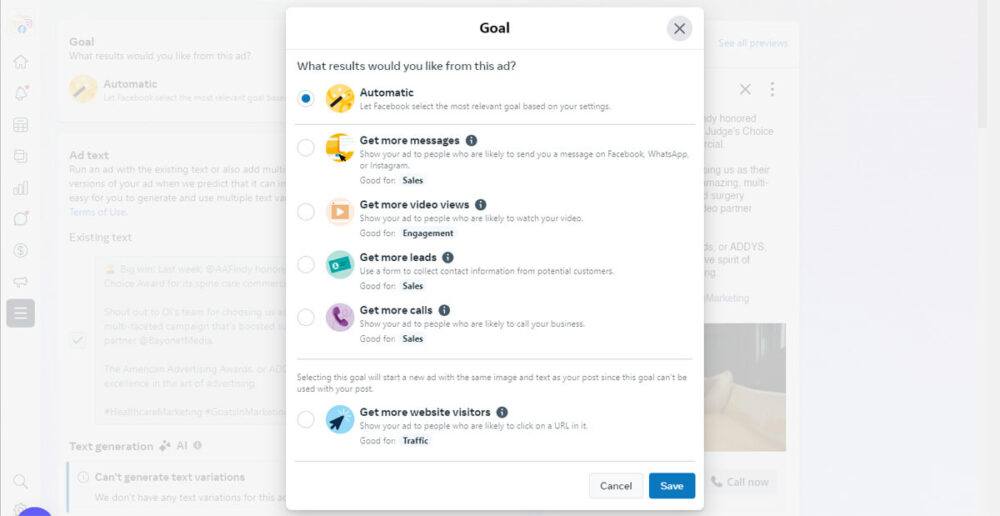So your company has just produced an amazing video for marketing—how do you make sure the right people actually see it? Whether it showcases your brand, highlights your services, or introduces your fantastic team, if you launch but don’t have a strategic plan for sharing it with the world, your video might as well be a treasure without a map. And, just like Blackbeard’s long-lost bounty, it will sit unseen and unappreciated.
This article explains how to create plans for the distribution of videos for marketing, including the pros and cons of different channels. Keep reading to learn more so you can make sure your asset doesn’t get lost in the web’s digital sea.
Creating a marketing video distribution plan
In most cases, thinking through these basic marketing strategy questions happens before you start the creation of your video for marketing, but you’ll find these answers are just as relevant and helpful when making distribution plans.
What is the purpose of your video for marketing?
Having a clear sense of what you’re trying to accomplish can help guide your plans for getting your video out there. Make sure you have answers to these questions before deciding on which tactics to include as part of your distribution strategy:
- Who are you trying to reach? Go beyond the basic demographics of your target audience and consider how your service or product serves them. Also, ask yourself: What’s going through their mind? What motivates or excites them?
- What are you trying to achieve? What are your measures of success? This is the feeling you want them to have or the action you are wanting your audience to take. Make sure you understand what you are working towards, whether it’s measurable, such as analytic data, or immeasurable, like brand perception. Align this to your business goals.
- What are the pain points of people in your target audience? What do they need before taking the desired action? List out their struggles and the information or knowledge that helps fill those gaps for those in your target audience.
- How and where is it best to reach people in your target audience with your videos? Explore this one a bit deeper by looking at the types of distribution channels and how to choose which ones work for you.
Marketing video distribution channels
Depending on your goals and content, you can take a few approaches to creating a video distribution plan. It’s helpful to think of your options in three buckets:
- Owned distribution channels
- Earned distribution channels
- Paid distribution channels
Owned distribution channels
Owned distribution channels are platforms where you have complete control over the content—what gets posted, when it’s shared, and how it’s presented. Your company owns these assets, giving you the freedom to tailor your message precisely. Examples include your company’s:
- Website,
- Blog(s),
- Newsletter(s) in email and print format,
- Internal communications (including digital signs, captivate screens, elevator displays, Intranet sites, etc.),
- Sales pitches,
- Recruitment events, and
- More!
While social media profiles are technically owned channels, you have slightly less control over how content appears and who sees it compared to your website or other company-owned platforms. This is important to consider when formulating your distribution plan, but it’s not a reason to keep you from using social media platforms due to their numerous benefits and reach.
Which social media channels are best for distributing marketing videos?
Sharing on this distribution channel is how you can get what we like to call “quick wins” at TBH Creative. It’s easy to upload a video for marketing to YouTube, post it on social platforms, and embed it on a strategic spot on your website or blog.
Pro-tip: Pin your video for marketing to the top of your social media profiles to ensure it is one of the first touchpoints visitors encounter from your organic content.
Utilizing your owned distribution channels for video content is a no-brainer. Get your team together and brainstorm how other departments can use the video in their customer-facing interactions or company events. If you already have an email newsletter with a list of engaged contacts, share the video through an email campaign to maximize its impact.
Earned distribution channels
Also known as shared channels, earned distribution channels involve others sharing your content on their platforms. Unlike your company-owned sites, these third-party platforms are controlled by customers, journalists, public relations representatives, bloggers, or anyone else who might find your content worthy of sharing.
This category includes distribution methods you don’t control since the content is owned by third parties. Some examples include:
- Review sites,
- Discussion boards,
- News outlets’ channels (broadcasts, social media, website, newsletters, etc.)
- Social media shares/mentions, and
- Guest-authored articles.
Since you can’t directly share content via this distribution channel (because placement and inclusion are “earned”), having a strategic plan for active engagement to get on the radar of decision-makers can significantly enhance the odds your video for marketing might be chosen for distribution.
How do I know which channels I should choose to promote my video?
If your goal includes increasing earned distribution, becoming an active participant on these platforms is key. Interacting with people in your target audience (e.g., responding to comments, participating in discussions, and sharing valuable insights can significantly boost your visibility) makes it easier to figure out what drives engagement.
When your target audience sees you as an involved member of the community, they’re more likely to share your content, expanding your reach even further. This kind of organic engagement also builds trust and credibility.
Paid distribution channels
The last category, paid distribution channels, is fairly self-explanatory—it’s the kind of distribution you can pay for.
Pay-to-play marketing video distribution
Sometimes, the best places to share your videos require you to pay for placement. Four of the most common paid distribution channels for promoting video assets include:
- Pay-per-click (PPC) ads
- Sponsored content
- Influencer content
- Paid social ads
PPC ads
With PPC Ads, you only pay when someone clicks on your ad. Think of those prominent spots in Google search results. That’s PPC in action. By strategically pairing PPC campaigns with SEO, you can drive steady traffic to your videos for marketing and attract high-quality leads from people searching for related topics. With a targeted approach, ensuring your message reaches the right audience at the right time is easier.
Sponsored content
Any promotion may be labeled sponsored content if it’s shared because you’ve paid a brand, public figure, influencer, or other company to showcase marketing content (including videos) to followers on their platforms.
People include this type of distribution because it helps align your brand with trusted entities and introduces you to their established audience. It’s like getting a warm introduction to a new crowd, building credibility, and expanding your reach effortlessly.
When should I work with influencers to get my video out there?
Partnering with influencers allows you to tap into the power they have to influence people in your target audience from their channels across social networks. With the help of these trusted experts and trendsetters, you will be able to leverage their loyal followings and authentic voices for your own benefit.
Influencers can seamlessly integrate your content into their own, providing a form of word-of-mouth marketing that consumers trust. Even micro-influencers with niche followings can play a crucial role in amplifying your video’s visibility and engagement.
What are signs I should pay to promote my video on social media?
Paid social ads are a versatile tool in your marketing arsenal, encompassing various other paid distribution channels. These ads blend seamlessly into users’ social media feeds, offering an organic feel while capturing attention.
Whether you’re using YouTube, Instagram, Facebook, or any other platform, paid social ads help you integrate your message naturally into the daily scrolling habits of your target audience.
How do I know when to use one channel over another to distribute my marketing video?
This type of exposure sounds promising and can provide extensive outreach, but it’d be smart to pause and review your marketing strategy responses from above.
Before diving into every opportunity just to get your message in front of as many eyes as possible, these distribution channels require an investment. They may not all align with your goals or reach your target audience.
A beginner-friendly platform, like Meta for Business (where you can manage Facebook and Instagram business accounts), might be a good starting point. This tool allows you to customize the goals for your paid advertisements and select parameters for your desired audience. Additionally, you can set a budget to control your spending throughout the ad campaign.

Google Ads offers more options, such as selecting the ad format, but this customization requires more knowledge and experience.
Like Meta for Facebook, Google Ads also gives you the option to receive notifications about your campaign’s performance, allowing you to make adjustments while it is still running.

After investing significantly in producing your company video, you might be hesitant to spend more on distribution. However, what’s the purpose of your investment if it never reaches your audience? If you’ve been measuring social media success and website traffic, but your current owned or earned channels aren’t delivering the desired reach, it’s time to reassess.
Develop a plan to identify the most effective paid channels for your goals and stay sharp on how you can continue optimizing your reach there.
Don’t skip the basics
Pro-tip: Before recording your video for marketing, analyze audience data to determine which devices your users will likely use when viewing your video content and tailor its size—horizontal or vertical—accordingly. For example, a vertical format might be best if most of your audience will be watching from mobile devices, like smartphones.
Now that you’ve identified where to start distributing your video for marketing, it’s time to make sure the details are covered, too.
Customize and build on this checklist to make sure your team remembers all of the most fundamental work to complete before distributing a new video for marketing:
Choose the proper hosting platform based on your goals. Review options in areas such as analytics and customizations available, video player quality, security and privacy, cost, and storage to ensure it will be able to meet your needs. Generally speaking, marketers choose:
- YouTube for maximizing video reach and audience engagement
- Vimeo for more professional, higher-quality video presentations
Does your video-sharing strategy match what your target audience wants? Their needs might mean your full video is best on some channels, but only a portion provides what they’re looking for on others. For example, LinkedIn might be more appropriate for sharing full-length professional or industry-focused content, whereas Instagram may be the better choice for sharing visually appealing, shorter video clips.
Use compelling thumbnails to grab attention—think of them as the cover of a book that invites viewers to dive in. That said, don’t compromise getting attention with adherence to your brand guidelines. Maintaining tone, style, and messaging consistency across all platforms. This consistency helps build brand recognition and trust.
Incorporate the right keywords in your video for marketing’s title (opt for something helpful), description, and tags to help improve its visibility in search results.
Maximize the reach of your video for marketing
If you only tackle initial planning and production when adding video assets to campaigns to support your marketing goals, you’re setting yourself up for disappointment. For the best ROI, you can’t just share it and hope for the best.
A distribution strategy ensures that it reaches the right audience at the right time and through the right channels (and this requires work after posting).
Stay ahead by setting a reminder to check in on its engagement regularly—monitor views, likes, shares, and comments to gauge its performance. Then, refine and optimize based on what you learn from this data.
Need help distributing your marketing video?
TBH Creative’s content marketing experts help companies and organizations in a wide range of industries to develop and refine their distribution strategies for marketing videos. Your video deserves to be seen by the right audience at the right time in the customer journey. How can we help you? Let’s start a conversation.

